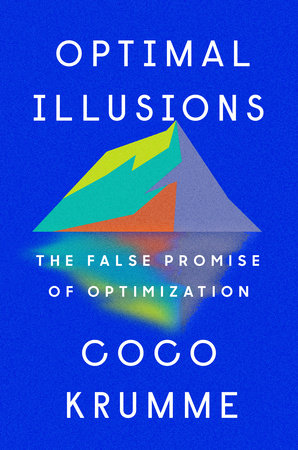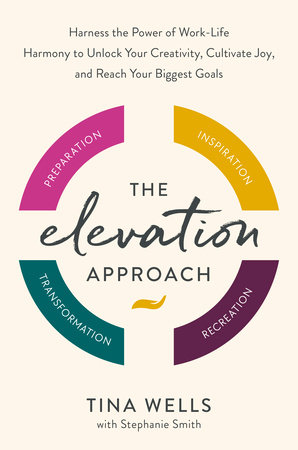Quick Summary
One Sentence Summary
“SmartTribes” by Christine Comaford provides insightful strategies for leaders to enhance team performance and foster a culture of high engagement and innovation.
Big Idea
The core concept of the book revolves around transforming traditional work environments into “SmartTribes,” where emotional engagement and neurological effectiveness are leveraged to boost productivity and creativity.
Five Key Ideas
- Neuroscience in Leadership: Understanding how the brain functions in work environments and using this knowledge to enhance team performance.
- Creating Safety and Belonging: Strategies for building a workplace culture where employees feel secure and valued, fostering loyalty and motivation.
- Enhancing Emotional Engagement: Techniques to increase emotional investment in work, leading to higher job satisfaction and productivity.
- Navigating Change and Uncertainty: Tools for effectively managing change and reducing stress, helping teams adapt and thrive in evolving situations.
- Empowering Innovation and Growth: Methods to stimulate creativity and encourage innovation within teams, driving growth and success.
Actionable Advice
- Apply neuroscience principles to understand team dynamics and individual motivations.
- Cultivate a culture of trust and safety to promote loyalty and engagement.
- Encourage open communication and emotional investment in work.
- Manage change effectively through clear communication and support.
- Foster innovation by creating an environment that welcomes new ideas and experimentation.
About the Author
Christine Comaford is a leadership consultant and executive coach with expertise in neuroscience and business. With a diverse background in entrepreneurship, she brings a unique perspective to organizational development and team dynamics.
Read Next
For further exploration of similar themes, consider:
- “Drive” by Daniel H. Pink, for insights into motivation and performance.
- “Switch: How to Change Things When Change Is Hard” by Chip Heath and Dan Heath, for strategies on managing change.
- “Leaders Eat Last” by Simon Sinek, for a deep dive into leadership and creating supportive work cultures.
In Depth
Neuroscience in Leadership
“SmartTribes” dives deep into how understanding the brain can revolutionize leadership. Comaford argues that leaders who grasp how their team’s brains work can vastly improve productivity and satisfaction.
Neuroscience isn’t just for scientists. It’s a tool for leaders too. Comaford shows how brain science principles can guide better decision-making, problem-solving, and team dynamics. It’s about tapping into how our brains function in work settings. When leaders get this, they can foster an environment where teams flourish.
One crucial concept is the “Critter State” versus the “Smart State.” The Critter State is our primitive, survival-focused brain mode. It’s all fight, flight, or freeze. Not great for innovation or collaboration. The Smart State, however, is where creativity, problem-solving, and collaboration live. Leaders need to shift teams from Critter to Smart State for success.
An example? Let’s talk about a company facing high turnover. Employees were stressed, and productivity was down. Through Comaford’s lens, it was clear: the team was stuck in the Critter State. They were in survival mode, feeling threatened and insecure.
The turnaround came with a simple but profound shift. Leadership began focusing on clear communication, transparency, and acknowledging successes. They also provided tools for stress management. Slowly, the team shifted. From feeling threatened to feeling valued and secure. That’s the Smart State.
“When we understand the neurological realities of our teams, we can lead them from fear to safety, from isolation to connectedness, from powerlessness to empowerment.” – Christine Comaford, SmartTribes
This quote captures the essence. Leaders aren’t just managing tasks; they’re guiding emotions and brain states. Understanding neuroscience is about recognizing these emotional and psychological needs.
Comaford suggests practical tools too. For instance, the “Outcome Frame.” It’s a way of focusing on desired outcomes rather than problems. It shifts thinking from reactive (Critter State) to proactive (Smart State). Ask: What do you want? What will having that do for you? How will you know when you have it? This method opens up creative problem-solving pathways.
Neuroscience in leadership isn’t about being a brain expert. It’s about using what we know about the brain to create better work environments. It’s about moving teams from stress and fear to innovation and collaboration.
In essence, Comaford’s approach is revolutionary yet simple. Understand the brain. Understand your team. Lead them into the Smart State. It’s where real growth and productivity lie.
Creating Safety and Belonging
In “SmartTribes,” Comaford emphasizes the importance of a safe and inclusive workplace. When people feel safe and like they belong, they do their best work.
Safety and belonging aren’t just feel-good concepts. They’re vital for a thriving workplace. When people feel unsafe or out of place, their performance suffers. But when they feel secure and included, they’re more engaged and productive.
A powerful example from the book is a tech company struggling with collaboration. Teams were siloed, and trust was low. Comaford worked with them to foster a sense of safety and belonging. They started with ‘All Hands’ meetings, where successes were celebrated and failures were discussed openly. Leaders were trained to listen and validate concerns. Gradually, a culture of safety and openness took root. Productivity and innovation skyrocketed.
“A sense of safety and belonging isn’t just nice to have; it’s a must-have for teams to function at their highest level.” – Christine Comaford, SmartTribes
This quote encapsulates the core message. A safe and inclusive environment is crucial for high performance.
Comaford offers tools to create this culture. One is the “Safety Audit.” It involves asking team members how safe they feel to speak up, contribute ideas, and take risks. This tool can uncover hidden issues and open pathways for improvement.
Another tool is the “Belonging Booster.” It’s about recognizing and valuing diversity. Leaders should encourage different perspectives and create opportunities for everyone to contribute. This approach fosters a sense of belonging and boosts morale.
Creating safety and belonging is about building trust and understanding. It’s about making every team member feel valued and heard. When people feel they belong, they’re more committed and creative.
In summary, safety and belonging are not just HR buzzwords. They’re essential for a high-performing team. Leaders must actively work to create this environment. It’s where true collaboration and innovation thrive.
Enhancing Emotional Engagement
Emotional engagement is a game-changer. Comaford insists on its power in “SmartTribes.” It’s about connecting deeply with work, leading to satisfaction and better results.
Emotionally engaged employees don’t just work. They care. They bring passion and energy. This boosts morale and productivity. But how do you enhance emotional engagement? Comaford provides the answers.
Consider the case of a sales team described in the book. They were hitting targets but lacked passion. Their work felt mechanical. Comaford introduced the concept of “emotional equity.” It’s about connecting personal values to work. The team started sharing personal stories about why their work mattered. They connected their tasks to their values. The change was palpable. Sales increased, not just in numbers but in quality of interactions.
“Emotional engagement is the secret sauce that can turbocharge your team’s energy, commitment, and performance.” – Christine Comaford, SmartTribes
This quote underlines emotional engagement’s transformative power. It’s about igniting a deeper connection to work.
One tool Comaford suggests is the “Values Link.” Leaders should encourage team members to link their personal values to their tasks. This method creates a deeper sense of purpose and fulfillment.
Another strategy is the “Emotional Resonance Framework.” It involves understanding and acknowledging the emotional needs of team members. Are they seeking security, connection, or significance in their work? Leaders who can tap into these needs can greatly enhance engagement.
Enhancing emotional engagement is also about creating an environment where emotions are acknowledged and valued. It’s about moving beyond just rational aspects of work. Leaders should be open to emotional expressions and encourage team members to share their passions and concerns.
In essence, enhancing emotional engagement is about making work meaningful on a deeper level. It’s about connecting the heart with the mind. When employees are emotionally engaged, they bring their best selves to work. This leads to a vibrant, productive, and satisfying workplace.
Navigating Change and Uncertainty
Change is inevitable. But how teams handle it makes all the difference. Comaford’s “SmartTribes” tackles navigating change and uncertainty effectively.
Change often triggers fear and resistance. But it can also be a growth opportunity. Comaford offers strategies to transform anxiety into positive action.
Take the example of a company facing a major restructuring in the book. Employees were anxious, rumors were rampant, and productivity was dropping. Comaford introduced the “Change Equation” tool. It involves communicating a clear vision for the change, understanding the steps involved, and ensuring everyone feels involved and heard. By applying this, the company managed to turn apprehension into excitement. Employees felt part of the change, not victims of it.
“In times of change, our leadership matters most. It’s our job to guide our teams through the storm, to calm, clarity, and new opportunities.” – Christine Comaford, SmartTribes
This quote highlights the leader’s role in managing change. It’s about steering the ship through rough seas to calmer waters.
The “Certainty Anchor” is another tool from Comaford. It’s about creating points of stability in times of change. This could be regular updates or maintaining certain routines. It helps reduce anxiety and provides a sense of control.
Also, the “Reframing Technique” is vital. It involves shifting the perspective on change from threat to opportunity. Leaders should encourage teams to see the benefits and growth potential in change.
Navigating change isn’t just about strategies and tools. It’s also about empathy and understanding. Leaders should be tuned into the emotional responses of their teams. They should provide support and reassurance.
In summary, navigating change and uncertainty requires a blend of clear communication, empathetic leadership, and practical tools. It’s about transforming fear into opportunity and leading teams with confidence and care.
Empowering Innovation and Growth
Innovation isn’t just a buzzword. It’s the lifeblood of progress. In “SmartTribes,” Comaford shows how to foster an environment that encourages creativity and growth.
Creating a space where new ideas thrive is key. It’s not just about having ideas; it’s about feeling safe to share them. Comaford provides tools and insights to make this happen.
A standout example from the book involves a manufacturing company. They were stuck in old ways, with declining sales. Comaford introduced the “Innovation Incubator” approach. Employees from different departments teamed up for brainstorming sessions. No idea was too small or too wild. This unleashed a wave of creativity. New product ideas flowed, and some became bestsellers.
“Innovation is not a solo sport. It thrives in cultures where ideas are shared, nurtured, and valued.” – Christine Comaford, SmartTribes
This quote captures the essence of fostering innovation. It’s a collective endeavor.
One tool is the “Idea Bank.” It’s a system where employees can submit ideas anytime. Leaders review these regularly and provide feedback. This keeps the creative juices flowing.
The “Failure Friendly” policy is crucial too. It means treating failures as learning opportunities, not setbacks. This encourages risk-taking and experimentation.
Empowering innovation also means providing the right resources. Time, budget, and support for development are essential. Employees should feel they have what they need to bring their ideas to life.
Lastly, leaders should be role models. They should demonstrate curiosity and a willingness to try new things. This sets the tone for the entire team.
In conclusion, empowering innovation and growth requires a deliberate effort. It’s about creating a culture where creativity is welcomed and nurtured. When employees feel empowered to innovate, the entire organization moves forward.
Actionable Advice
- Understand Brain States: Learn about the Critter State and Smart State. Help your team shift from survival mode to creative, problem-solving mode.
- Create Safety: Conduct a Safety Audit. Ensure your team feels secure enough to share ideas and take risks.
- Foster Belonging: Use Belonging Boosters. Celebrate diversity and ensure everyone feels valued.
- Link Values to Work: Encourage your team to connect their personal values with their tasks. This enhances emotional engagement.
- Communicate Clearly During Change: Use the Change Equation. Provide a clear vision and regular updates to guide your team through uncertainty.
- Anchor Certainty: Establish Certainty Anchors. Maintain certain routines or points of stability during times of change.
- Encourage Idea Sharing: Implement an Idea Bank. Create a system where team members can submit and review ideas regularly.
- Adopt a Failure-Friendly Policy: Treat failures as learning opportunities. Encourage risk-taking and experimentation.
- Provide Resources for Innovation: Ensure your team has the time, budget, and support they need to develop and implement new ideas.
- Be a Role Model: Demonstrate curiosity and openness to new ideas. Lead by example to inspire innovation.
About the Author
Christine Comaford is a renowned leadership and culture coach, serial entrepreneur, and bestselling author. With a diverse background, she boasts experience as a software engineer, venture capitalist, and White House consultant during the Clinton and Bush administrations. Her entrepreneurial spirit led her to build and sell five companies, making her a respected voice in business leadership. Comaford is known for her expertise in neuroscience and leadership, which forms the backbone of her unique coaching approach. She believes in the power of emotional engagement and brain-based techniques to enhance leadership and organizational performance. As a thought leader, Comaford has authored several books, including “Rules for Renegades” and “SmartTribes,” which reflect her belief in innovation, emotional intelligence, and the importance of creating thriving workplace cultures. Her work focuses on helping leaders and organizations navigate change, foster innovation, and create environments where teams can excel.
Read These Next
You might like these similar books
- “Drive: The Surprising Truth About What Motivates Us” by Daniel H. Pink
- “Leaders Eat Last: Why Some Teams Pull Together and Others Don’t” by Simon Sinek
- “Daring Greatly: How the Courage to Be Vulnerable Transforms the Way We Live, Love, Parent, and Lead” by Brené Brown
- “Thinking, Fast and Slow” by Daniel Kahneman
- “The Culture Code: The Secrets of Highly Successful Groups” by Daniel Coyle
FAQ
Q: What is the main focus of ‘SmartTribes’ by Christine Comaford?
A: The book focuses on enhancing leadership and team performance using neuroscience and emotional engagement techniques.
Q: Who should read ‘SmartTribes’?
A: Business leaders, managers, HR professionals, and anyone interested in organizational development and leadership.
Q: Does ‘SmartTribes’ offer practical tools and strategies?
A: Yes, the book provides practical tools like the Safety Audit, Belonging Boosters, and Change Equation for immediate application in the workplace.
Q: Can ‘SmartTribes’ help in managing change?
A: Absolutely. The book offers strategies to navigate change and uncertainty effectively, transforming fear into opportunity.
Q: Is ‘SmartTribes’ relevant for diverse industries?
A: Yes, the principles and tools in the book are applicable across various industries and organizational sizes.
Q: Does the book discuss team collaboration?
A: Yes, ‘SmartTribes’ emphasizes the importance of creating safety and belonging for fostering collaboration and innovation.







